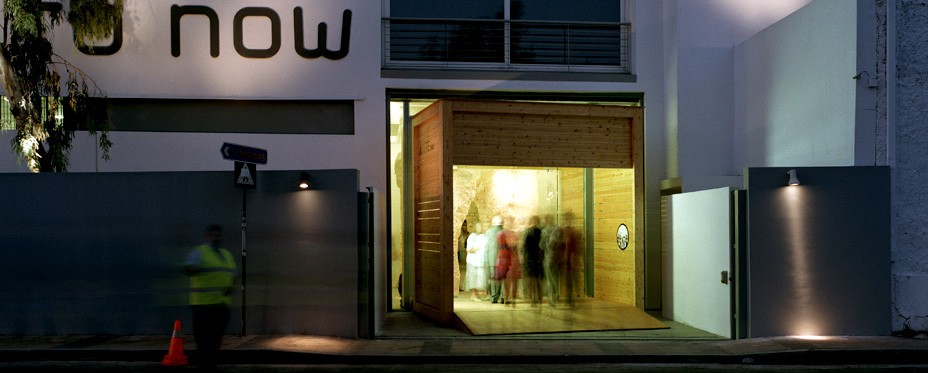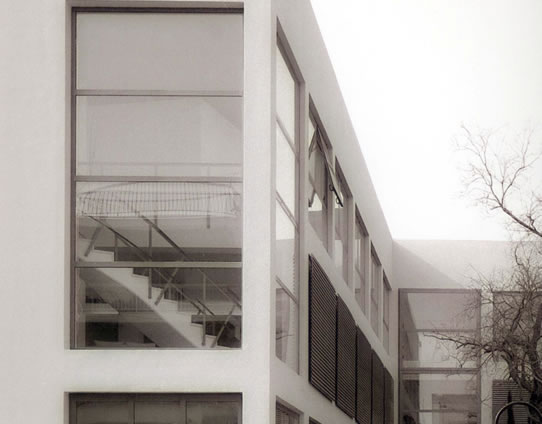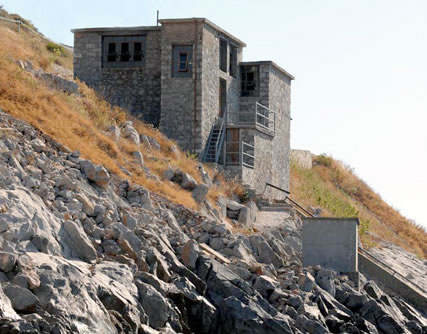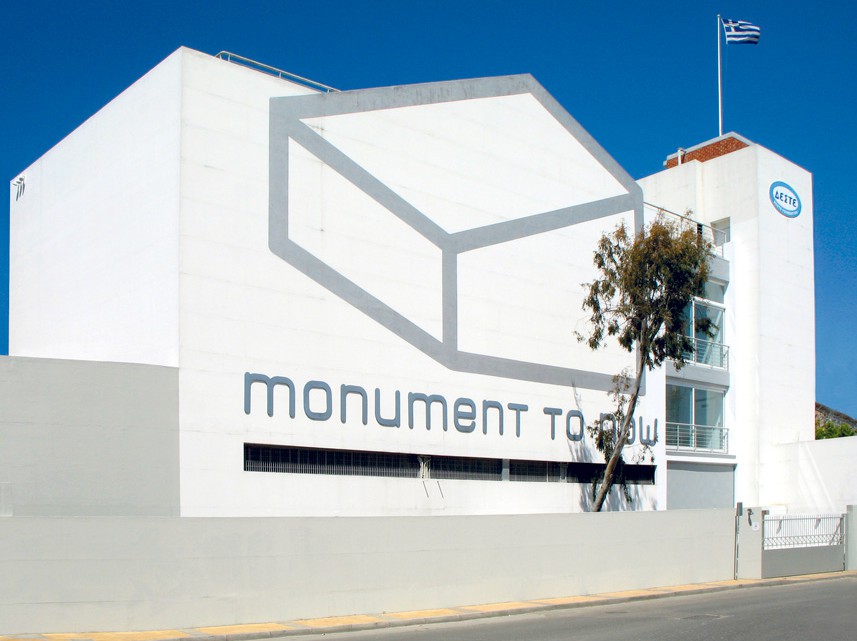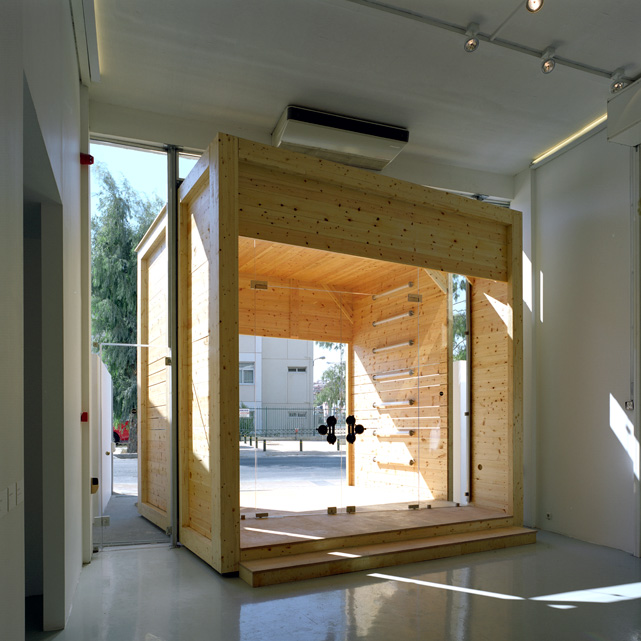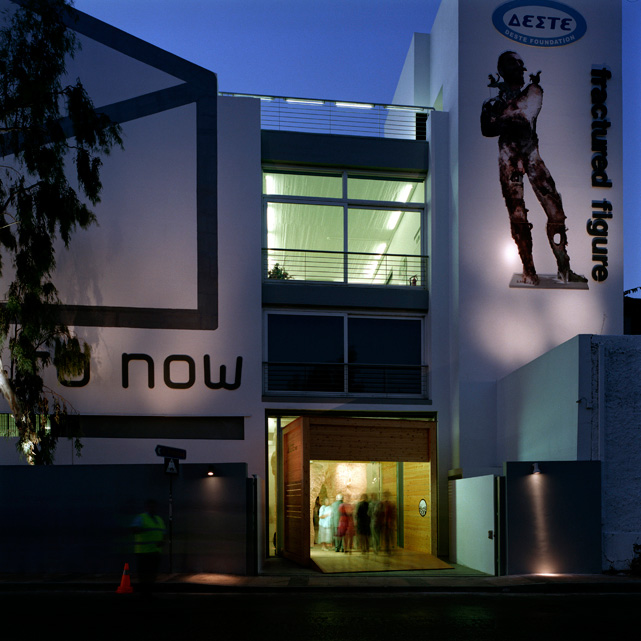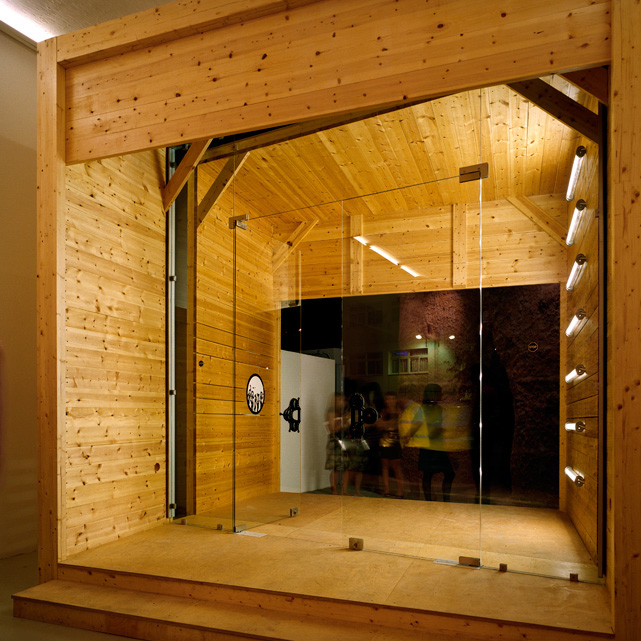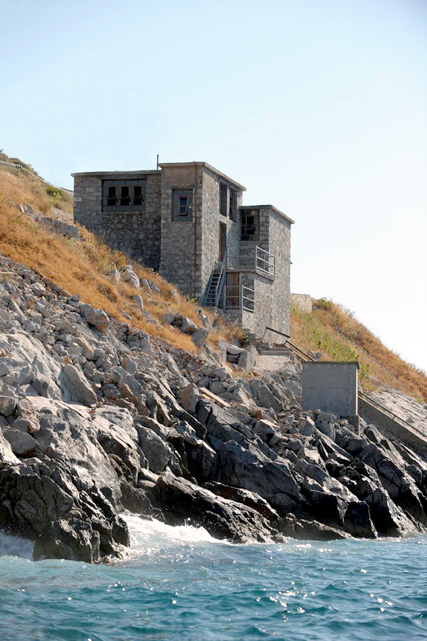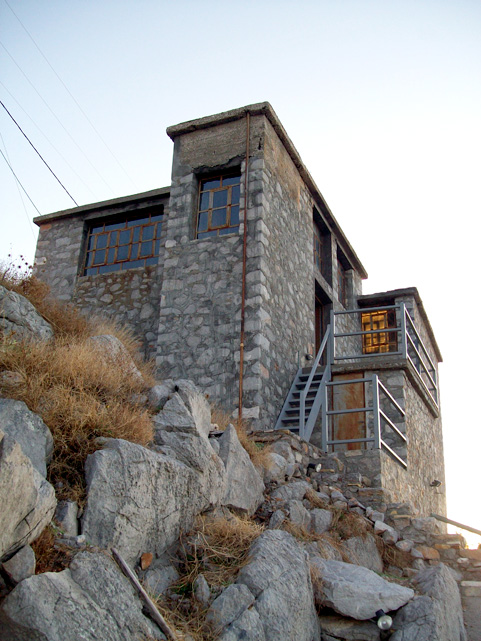The DESTE Foundation for Contemporary Art is a non-profit institution established in Geneva in 1983 by collector Dakis Joannou. Through its exhibition space in Athens, Greece, DESTE engages in an extensive exhibition program that promotes emerging as well as established artists and aims to broaden the audience for contemporary art, enhance opportunities for young artists, and explore the connections between contemporary art and culture. The flexibility of DESTE’s exhibition schedule enables the Foundation to respond to what is current in the art world, both nationally and internationally, and to embark on interesting projects as they emerge in today’s society.
Since its inception, DESTE—the Greek word for “look”—has been an international organizer of contemporary art exhibitions and a global supporter of arts-based projects and publications. In the early years of its foundation, the Foundation supported exhibitions that showcased the trends of art throughout the 80s and 90s in Greece, Cyprus, and Switzerland, emphasizing the universality of contemporary art.
HISTORY
Between 1983 and 1996, when the DESTE Foundation did not yet have a permanent exhibition space, the shows that took place in Athens were hosted at the House of Cyprus. Such shows include Cultural Geometry (1988), Psychological Abstraction (1989), Artificial Nature (1990), and Post Human (1992–1993), a series of groundbreaking shows curated by Jeffrey Deitch. During this time, DESTE also collaborated with a number of young Greek curators to organize shows that focused on emerging Greek artists.
The mid-90s marked one of the very first comprehensive presentations of the Dakis Joannou Collection in a show entitled Everything That’s Interesting Is New (1996). Presented at the Athens School of Fine Arts, “The Factory,” and taking its title from Jenny Holzer’s Truisms, Everything That’s Interesting Is New explored the interplay between art and popular culture. Providing a focused overview of international contemporary art from 1985 to 1995, the show also included the work of an earlier generation of artists, including Marcel Duchamp, Francis Picabia, and Man Ray, whose work was influential for artists working in the 80s and 90s.
In 1998 the DESTE Foundation moved to its first permanent space, a former paper factory in Neo Psychico redesigned by American architect Christian Hubert. In these newly restored premises, an ambitious exhibition program developed with shows that focused primarily on the Dakis Joannou Collection, such as Global Vision (1998–1999), a three-part examination of art from the 1990s; Jeff Koons’ A Millennium Celebration (1999–2000), a solo show that featured all of the artist’s works in the Dakis Joannou Collection; Tim Noble and Sue Webster’s Masters of the Universe (2000), one of the very first exhibitions of the British duo outside the United Kingdom; and Holdfast (2001–2002), an impressive collaborative painting installation by Barry McGee and Margaret Kilgallen which took up the Foundation’s entire space. DESTE’s novel examination of and focus on the Dakis Joannou Collection further facilitated the Foundation’s mission to explore international contemporary art and to introduce iconic artworks to the Greek public for the first time. This new era was also marked by a number of group shows organized in collaboration with various organizations such as the British Council and the Nicosia Municipal Arts Center.
In 2004, the DESTE Foundation organized Monument to Now, its most ambitious project to date. The show, which was part of the Athens 2004 Olympic Games Cultural Program, featured the work of more than sixty artists from the Dakis Joannou Collection and was curated by Dan Cameron, Jeffrey Deitch, Alison Gingeras, Massimiliano Gioni, and Nancy Spector.
THE BUILDING
Monument to Now was presented in two venues: DESTE’s building in Neo Psychico and in a newly renovated building in Nea Ionia, officially inaugurated as the Foundation’s main establishment in 2006. Built in 1931, the former sock factory was renovated by architect Christos Papoulias, who preserved its original structure while creating a one of a kind exhibition space. The new building also houses a library, enriched by donations and exchanges, which serves as a research and educational resource on art and design.
Recently, DESTE appointed the architecture firm Divercity to design the main entrance and exit of the Foundation. Playing with preconceived ideas about how society relates to art, the entrance of the Foundation was designed to look like a giant crate—identical to those used for the transportation of artworks—reconfiguring the relationship between the viewer and the exhibit. Questioning the traditional usage of objects, Divercity used a red carpet to highlight the Foundation’s exit.
PROJECTS
In an effort to act as a host to innovative thought and creativity, the DESTE Foundation’s core exhibition schedule is complemented by a number of projects, such as the DESTE Prize, awarded bi-annually to a young Greek artist; the Hydra Slaughterhouse Project, which takes place annually on the Greek island of Hydra; and the destefashioncollection, a project that aims to explore the connections between contemporary art and fashion.
To date, the DESTE Foundation collaborates with a number of internationally acclaimed curators and leading artists to showcase the most important artistic innovations and to organize curatorial projects and special events that reflect the global trends in contemporary art.
Within this framework, the DESTE Foundation has recently formed collaborations with the Museum of Cycladic Art and the Benaki Museum in Athens as well as the A. G. Leventis Gallery in Cyprus. Through a series of contemporary art exhibitions, the collaborations between DESTE and these institutions aim to promote new and radical developments in contemporary art practice and introduce important artistic innovations to a wider public.
